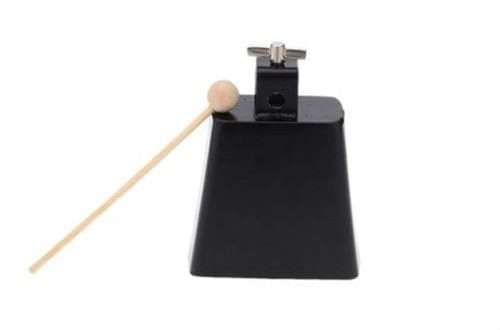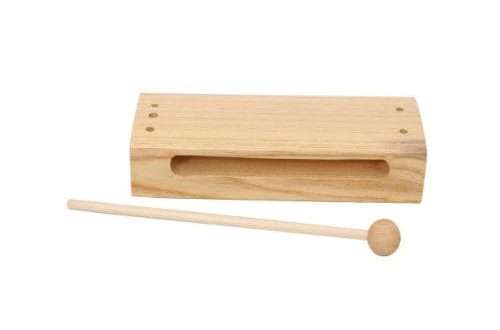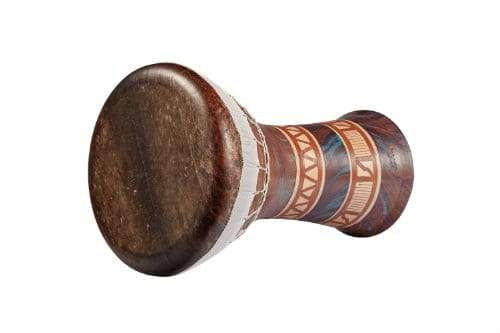
Darbuka: description of the instrument, history, varieties, structure, how to play
Contents
In eastern countries, one of the ancient percussion musical instruments called darbuka is widespread. For an oriental person, this drum is a life partner. You can hear the sounds of the instrument at weddings, religious holidays and other solemn events.
What is darbuka
According to the type of sound formation, the darbuka is classified as a membranophone. The drum is in the shape of a goblet. The top of the doomback is wider than the bottom. The bottom, unlike the top, remains open. In diameter, the tarbuk reaches 10 inches, and in height – 20 and a half.
The tool is made of clay and goatskin. Currently, you can see similar drums made of metal.

Устройство
According to the structure of the drum, Egyptian and Turkish tarbuks are distinguished. They have a different structure, each of which gives its own advantages to the musician while playing the doomback.
Turkish darbuka does not have smooth upper edges. Such a device allows you to extract from the instrument not only deaf sounds, but also clicks. However, the instrumentalist’s fingers suffer greatly.
The Egyptian darbuka, thanks to the smoothed edges, facilitates the playing of the musician and the rolling of the fingers during the Play. But the musician playing the Egyptian drum will not be able to extract clicks from it.
The frame of the drum is made of wood or metal. Covered in goatskin. The top membrane is secured with a rope. In metal drums, it is fixed by a special ring.
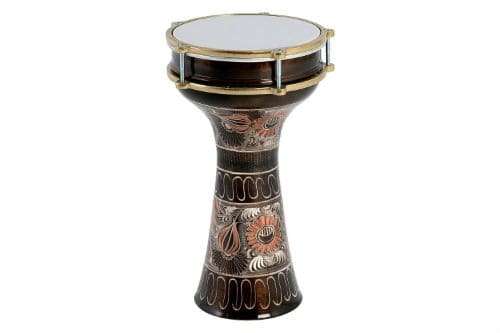
Various titles
The darbuka has several other names:
- tarbuka – in Bulgaria and Israel;
- darabuca – in Romania;
- dumbek is the name of the instrument in Armenia. It is shaped like a drum, made in Egypt, with rounded ends;
- tumbelek – in Greece;
- qypi is in Albania.
The structure of each instrument is different.
History of the tool
The history of the appearance of the drum begins with the late Neolithic in southern Denmark. Find tools during excavations in Germany, the Czech Republic, Poland. Most darbuk have various forms. This indicates that before coming to a single execution of the dumbek, the craftsmen experimented with the sizes, shapes, and filling of the inner part. For example, a kind of tambourine was inserted into some devices so that the instrument could make a high-pitched sound when struck.
In the Middle East, at the beginning of its inception, the instrument was ritual, was high and was called lilish.
You can see the darabuca in the drawings for the songs of the Virgin Mary during the liberation of Spanish convicts from the Arab invaders.

Varieties
Darbukas are distinguished by size and sound. Each nation has its own characteristics of creating darabuk or tabla.
By body material
The first doombeks were made from baked clay. Then, peach or apricot wood was taken to create the body. The frame was covered with calf, goat or fish skin.
Today, metal and leather substitute are used to make dumbek.
By the form of the corpus
According to the shape of the body, the table is divided into two types:
- Turkish with sharp edges;
- Egyptian with rounded edges.
The former is rarely used today. In the countries of Europe and America, you can find darabuk in the Egyptian version.
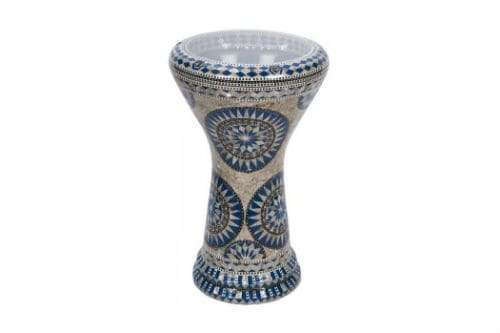
To size
By size, darabuk is divided into four main types:
- solo darbuka or Egyptian tabla measuring 43 cm with a top diameter of 28 cm;
- bass – dohol with dimensions from 44 to 58 cm and a neck size of 15 cm, and a top – 35 cm;
- sombati – a cross between the first and second, but high – 47 cm with a neck width of 14 cm;
- Tunisian – the average height is 40 cm, the diameter of the top is 25 cm.
The listed types of doombek are the most common.
By sound
Each of the varieties of darbuka has its own sound. For example, music played on the Turkish tarbuk sounds in the range from 97 to 940 Hz. This type of instrument showed the best sounding result in comparison with darabuks of other peoples.
Doira, unlike the usual darabuka, produces loud sounds, and tonbak is an instrument with a narrow sound range. A good tarbuka like the Tajik tavlyak covers three octaves.
Play technique
While playing the darbuk, the instrument is held on the left side, on the knees. In this case, they always play in a sitting position. If the performer plays while standing, then he presses the instrument to his left side.
Execution is done with two hands. Use palms and fingers. The main one is the right hand. She sets the rhythm, and the left one ornaments it.
Experienced musicians combine playing with their hands with a special stick. By the way, gypsies use this method of playing.
They beat in the center of the drum – a dull low sound is obtained. If they beat closer to the edges, then the instrument produces a high and thin sound. To change the timbre, they use finger rolls, put their hands inside the tarbuki.

Manufacturers
The main manufacturers of darbuka are:
- Remo;
- Meinl;
- Gawharet el Fan;
- Alexandria;
- Kework.
The first importer of the tumbler was Mid-East MFG. In Turkey and Egypt, tarbuka is sold at almost every counter.
Famous Performers
Masters known for playing the drum:
- Burkhan Uchal is a composer who plays many instruments, except for the tarbuka;
- Bob Tashchian;
- Ossama Shahin;
- Halim El Dabh – performs ethnic compositions.
Dumbek is used in musical groups, and belly dance is performed only to the music of this drum.



